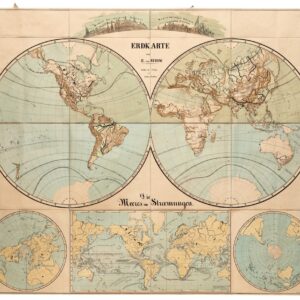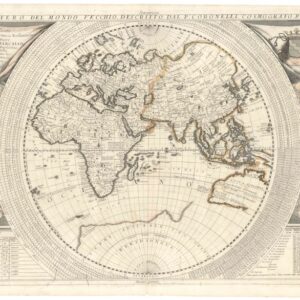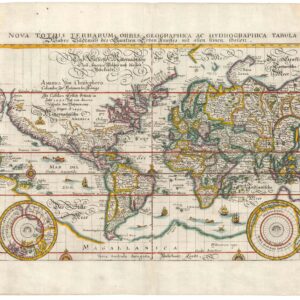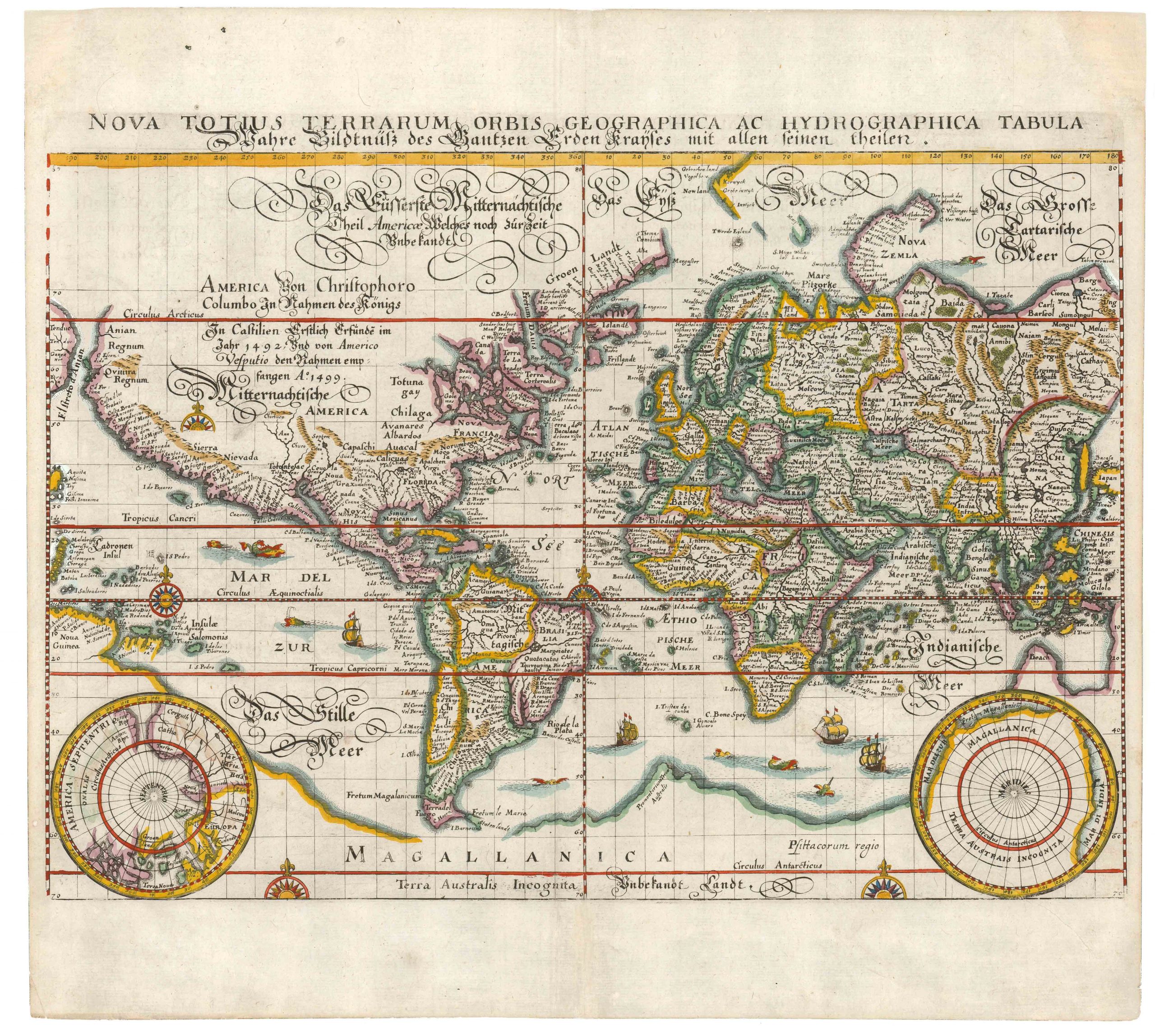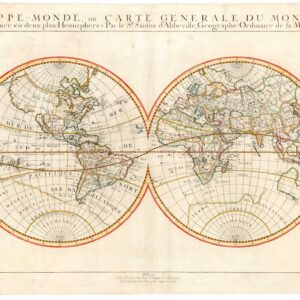A testimony to the deep and historical roots of racism, yet also evidence of slow but positive progress.
Hammond’s Map of Mankind
Out of stock
Description
The 1946 Hoffman Anthropological Map of the World, also known as Hammond’s Map of Mankind, was designed and issued by the Field Museum in Chicago as part of a grand re-envisioning and recasting of the concept of Race.
The poster, published by C.S. Hammond & Company in 1946, consists of a central world map, slightly offset to the left of the visual field and surrounded by color swathes with seventy-seven images of the world’s different peoples. The images are, in fact, photographs of a series of bronze busts, which the museum’s founder, Stanley Field (1875-1964), commissioned from artist Malvina Hoffmann (1885-1966) for a new anthropology exhibition in the 1930s. The busts, which Hoffmann dubbed her ‘Races of Mankind’ series, were meant to provide physically accurate representations of the Earth’s many peoples.
Hoffmann spent five years traveling the world to accomplish this goal and meet some of the many people she would have to sculpt. The result was a set of 104 sculptures, of which 77 were busts or heads, and twenty-seven were life-size, full-body sculptures. The installation of these sculptures was opened to the public in 1936 – an auspicious period in the history of racial anthropology – and remained part of the permanent collection of the Field Museum for over thirty years. In 2016, several of Hoffmann’s sculptures were included in a retrospective exhibit entitled Looking at Ourselves: Rethinking the Sculptures of Malvina Hoffman. As part of this display, the curators retraced Hoffmann’s travels and replaced the original generic labels seen on this poster with more specific and correctly identified ethnic groups. In some cases, they had even identified the models themselves, highlighting these people’s individuality.
On the map, the continents of the world have been color-coded, and this is repeated in the space with Hoffman’s many figures to affiliate the statues of the people with specific regions of the world. It is worth noting here that the subdivision is not entirely based on a delineation of continents but rather applies a macro-perspective on ethnic groupings. Meso-America has consequently been linked to South America rather than North America, Greater Persia and the Indian Subcontinent have been set apart from the rest of Asia, and the Middle East is affiliated with Africa. Within each color segment, the busts represent different peoples from the macro-region. These are all labeled to avoid confusion (e.g. Japanese man, Eskimo woman, or Pygmy boy). Even so, the selection of groups and ethnic categories remains so overtly simplistic that they had to be completely rediscovered before these bronzes could be properly contextualized in a modern setting.
Hovering above the map we find the representation of three of Hoffmann’s larger statues in the title cartouche. These represent the overall subdivision of the Earth’s population into White, Negro, and Mongoloid (supported by little symbols repeated on the map and under each bust). Not only is this subdivision dramatically outdated, but there is an undertone of the era’s biological racism.
First and foremost, Caucasians are not only placed centrally and represented by the largest and most imposing statue, signaling both superiority and dominance; but the subdivision also applies the term White instead of the more taxonomically appropriate ‘Caucasian’, revealing just how heavily loaded the norms for categorizing people based on ethnicity were at the time.
Despite Hoffmanna’s expressed ambitions “to illustrate the dignity and individuality of each of her subjects”, the standards by which we today understand and classify ethnicity have become much more nuanced and balanced than in the 1930s. Consequently, most of the people who worked in anthropology in that era will inevitably come off as ‘antiquated’ in their views.
Census and publication history
Fifteen examples are cataloged in OCLC (no. 12528625). Institutional copies can, among other places, be found at Yale, Harvard, the University of Chicago, the Smithsonian, and the New York Public Library.
Cartographer(s):
Caleb Stillson Hammond (1862-1929) was the founder of a map-making and printing firm in Brooklyn, New York, named C. S. Hammond & Company. Hammond came from a career position as a cartographer with Rand McNally but split with them in 1900 to create his own firm.
C. S. Hammond & Company had enormous success during the early 20th century and would take a back seat in America only to Rand McNally. The company was sold in 1999 and has since been subsumed under the Kappa Publishing Group.
Malvina Cornell HoffmanMalvina Cornell Hoffman (1885-1966) was an American author and sculptor renowned for her sculptures of the people of the world. After attending art classes at the Woman’s School for Applied Design and the Art Students League of New York, she became an assistant to sculptor Alexander Phimister Proctor in 1907.
In 1910, Hoffman moved to Paris, where she continued her artistic education, including an apprenticeship under the French master, Auguste Rodin (only after several failed attempts). In 1929, she received a commission from the Field Museum of Natural History in Chicago to create a series of anthropologically accurate sculptures of the world’s peoples. Over the next five years, Hoffmann traveled the world to meet and study her models. She subsequently produced 104 bronze sculptures for the Field Museum.
Condition Description
Very good.
References
